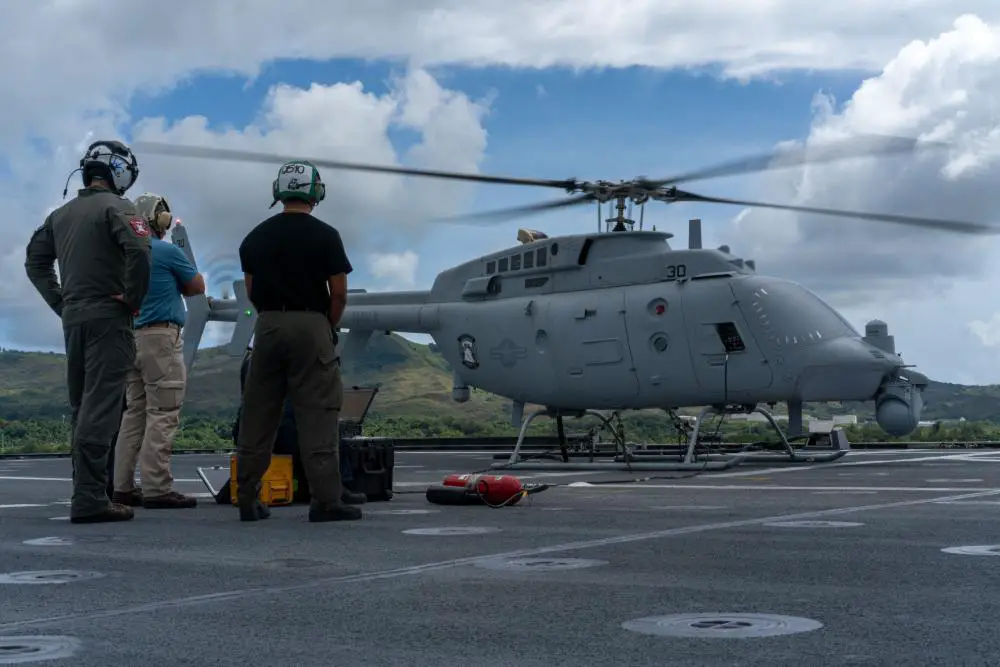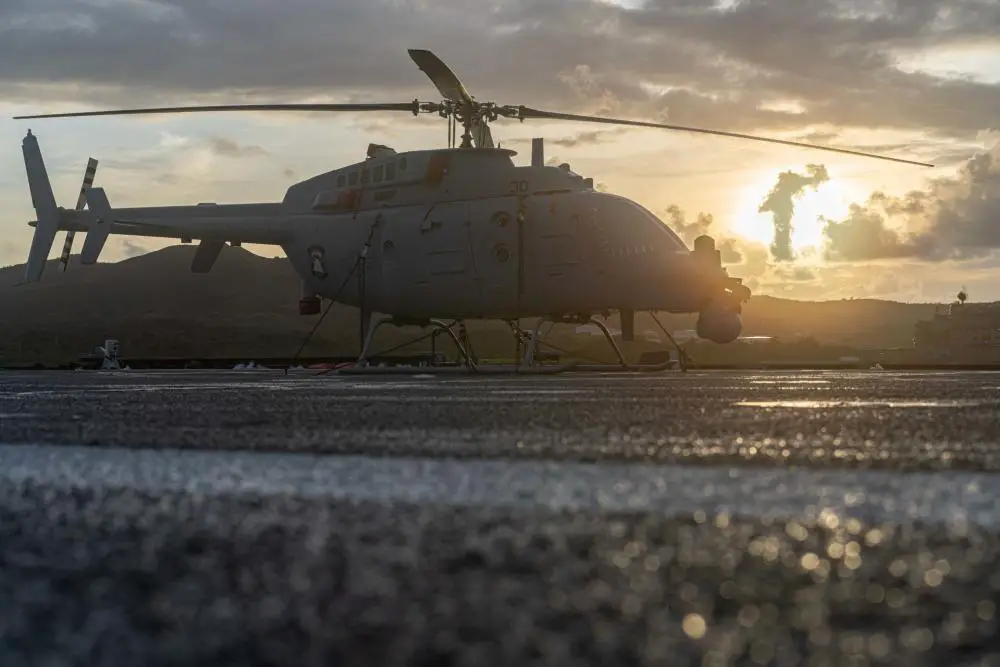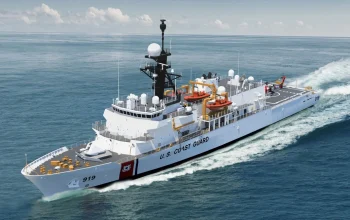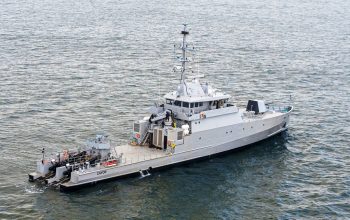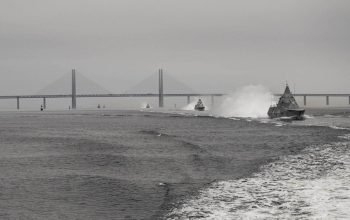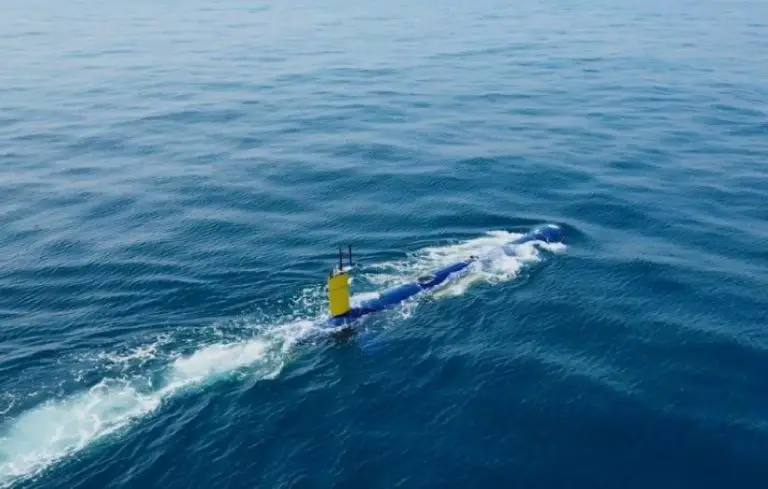The newest version of the U.S. Navy’s Northrop Grumman MQ-8C Fire Scout has been deployed for the first time on an overseas deployment to the Western Pacific. An MQ-8C Fire Scout attached to Helicopter Sea Combat Squadron (HSC) 23, on the flight deck of the Independence-variant littoral combat ship USS Jackson (LCS 6). HSC-23 and Jackson, part of Destroyer Squadron (DESRON) 7, are on a rotational deployment in the U.S. 7th Fleet area of operation to enhance interoperability with partners and serve as a ready-response force in support of a free and open Indo-Pacific region.
The Northrop Grumman MQ-8C Fire Scout (known as the Fire-X during development) is an unmanned helicopter developed by Northrop Grumman for use by the United States Navy. The MQ-8C also has autonomous take-off and landing capability. It is designed to provide reconnaissance, situational awareness, aerial fire support and precision targeting support for ground, air and sea forces. The MQ-8C airframe is based on the Bell 407, while the avionics and other systems are developed from those used on the MQ-8B Fire Scout. It first flew in October 2013 and achieved initial operational capability on 28 June 2019.
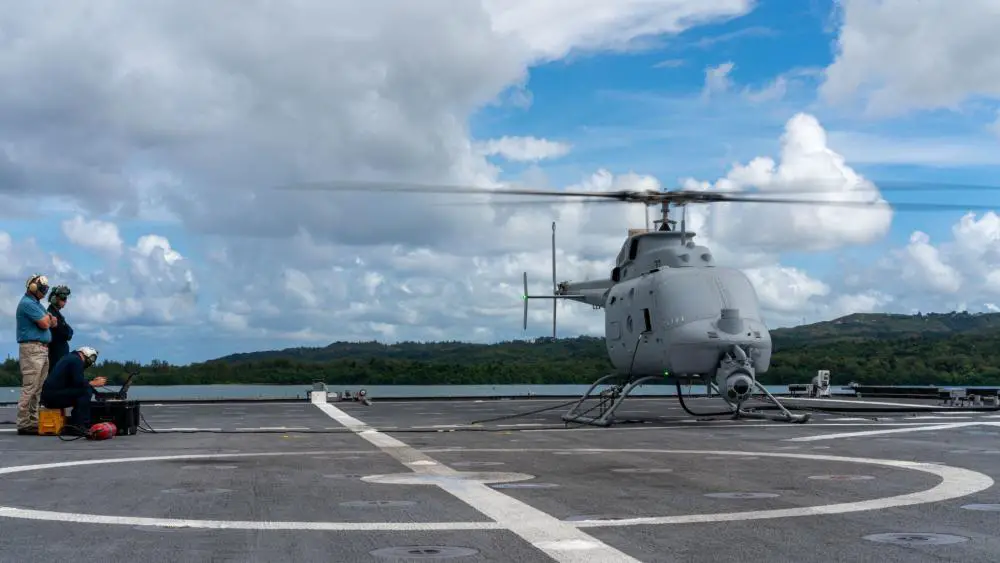
Northrop Grumman flew the MQ-8C demonstrator installed with their AN/ZPY-1 STARLite Radar, although there was no requirement for an MQ-8C radar at the time; the Navy began seeking information for a radar for the MQ-8C in July 2014 with surface search, synthetic aperture radar, inverse SAR, and weather mode capabilities. Although the AN/ZPY-4 has been installed on some B-model Fire Scouts, the larger C-model can accommodate a larger and more powerful radar. The Fire Scout program office investigated whether to equip the airframe itself to perform more missions or focus on manned-unmanned teaming with larger MH-60S/R Seahawk helicopters.
The MQ-8C was declared mission capable on 28 June 2019. In tandem with a change in focus for the LCS involving increasing the ship’s lethality, the MQ-8C’s role was changed to focus on providing targeting and surveillance data. While the helicopter could carry 7-tube APKWS guided rocket pods, the LCS only has one weapons magazine used to store all the ship’s weapons and didn’t provide much space for loading weapons onto the aircraft. Instead of being a weapons platform, the MQ-8C will use its long endurance and radar to provide the LCS with enhanced over-the-horizon targeting capabilities.
